Guide to Shopping in Japan
My Guide to Shopping in Japan article is up and you can read it here.
First Published on UK Anime Network.
It’s the age old anime fan’s dilemma: You love all things anime and manga, you’re in Japan, but where do you go to spend all your hard earned Yen? We have all heard about Akihabara Electric Town, but unless you’re fluent in Japanese actually finding your way around and working out which shops you want to visit can prove to be an exercise in futility. That’s where we come in, with our handy dandy UK Anime Guide to Shopping in Japan.
We shall be covering the usual suspects such as Akihabara and Den-Den Town, as well as a one or two hidden gems. Just don’t blame us when you run out of money and have to live on convenience store food for the rest of your holiday - although that’s not as bad as it sounds, Japanese convenience store food is actually pretty good for the most part. We’ll cover the basics first, then we will move on to which areas you’ll want to check out before finally covering which shops you’ll want to keep an eye out for.
The Basics
Keep one eye on vending machines and places to eat
Chances are you’re going to be shopping for a while, especially somewhere like Akihabara, so scoping out the places to get food and drink while you go will make sure you’re never struggling to find somewhere to grab a drink or a bite while your stomach growls impatiently at you. This is doubly important if you go in the summer as I did - you will need to drink a lot of fluids if you want to stay on your feet in those temperatures. Luckily Japanese cities are littered with reasonably priced vending machines and convenience stores to get your fix of Pocari Sweat and Edamame. Similarly, keep an eye out for toilets (especially western style); you don’t want to be caught short half-way up an eight storey flight of stairs (there are a lot of those, especially in Tokyo) while carrying bags full of precious figures, manga, CDs and Blu-rays.
Don’t be afraid to buy second-hand
I know what you’re thinking: “Second-hand? I want new and shiny!”. But bear with us here, this isn’t like wandering around the lacklustre shops we call second-hand stores here in the UK. You won’t find the scratched discs, torn booklets and the infamously malodorous shop floors of our second-hand stores in Japan. No, the Japanese are very particular about their second-hand goods and the vast majority of Japanese second-hand goods you will hardly be able to tell apart from new. The Japanese otaku (I should probably warn you that while we in the west tend to wear the ‘otaku’ label with pride, it’s actually a pretty derogatory term in Japan – so it’s best not to use it while you’re there) in particular are very careful with their possessions. You can easily pick up items as good as new for considerably less money than they would cost new, you’ll even find some second-hand items still sealed in their original boxes. The second-hand shops are also the best places to hunt out those slightly older, perhaps out of print, items you’ve been lusting after for years.
Beware the fake monks
This tip applies mostly to the big cities, especially Tokyo: If you are stopped in the street by someone dressed like a monk asking for money (often “donations” for a “blessing”), don’t give them anything. Don’t even feel the need to stop and be polite. I know it’s difficult with our tendency towards politeness here in the UK, but try your best to ignore them. Please do feel free to report them to the police if you get the opportunity; it’s apparently quite a widespread scam targeting foreign tourists. I myself was approached by one in Shibuya. Just remember this: Real monks don’t ask for money on the street, ever.
Don’t be afraid to ask for help or directions
Even if you don’t speak any Japanese, you’ll be surprised just how common good English speakers are in Japan. Many Japanese people will be more than happy to help you out and practice their English (especially once they realise you’re from the UK). That said, if you can manage to learn enough Japanese to ask basic questions like directions, how to ask for something in a shop, etc. you will be surprised just how far that can take you. If all else fails there’s one word you need to know: “wakarimasen”, which literally means “I don’t know”. Think of it as a polite way to say you don’t understand.
Don’t try to haggle
The Japanese don’t haggle, it’s considered rude. Well, that’s not strictly true: They do haggle occasionally and under certain specific circumstances - but for our purposes it’s best to consider it off-limits unless you’re fluent in both the language and the culture.
Beware Adult Content
Quite a few of the shops you’ll want to visit will have adult sections, some even have whole floors dedicated to adult material. These sections will always be marked out, and are often behind curtains or similar, but if you’re not familiar with Japanese it can be all too easy to miss the signs. That’s fine if that’s the sort of thing you’re looking for, but just be aware it is possible to inadvertently wander into sections with shelves overflowing with pornography.
Where to Go
Tokyo
As you may expect from the capital city, Tokyo provides a wealth of otaku-friendly shopping opportunities, from Akihabara to Nakano and beyond.
Akihabara (Electric Town)
The big one. Known as a paradise for electronic goods since World War II, Akihabara has more recently become famous as the place to find all kinds of otaku goods and services. From manga stores to maid cafes, Akihabara has it all.
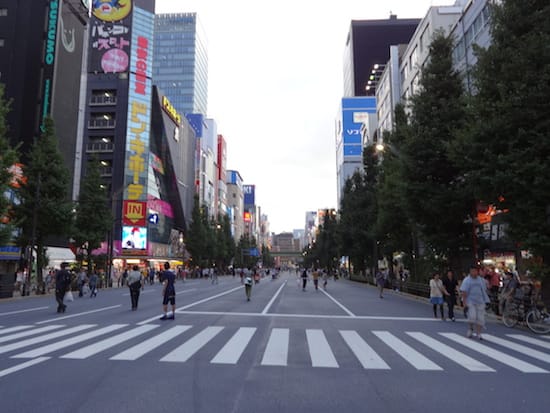
Chūō-Dōri, Akihabara
On Sundays in Akihabara, the main street (Chūō-Dōri) is closed to car traffic from 13:00 to 18:00, meaning you can walk in the road which makes getting around much easier. It also attracts lots of cosplayers, making Sunday the day to go for maximum nerdiness.
Nakano Broadway
Nakano Broadway is a shopping centre just a short walk from Nakano station.
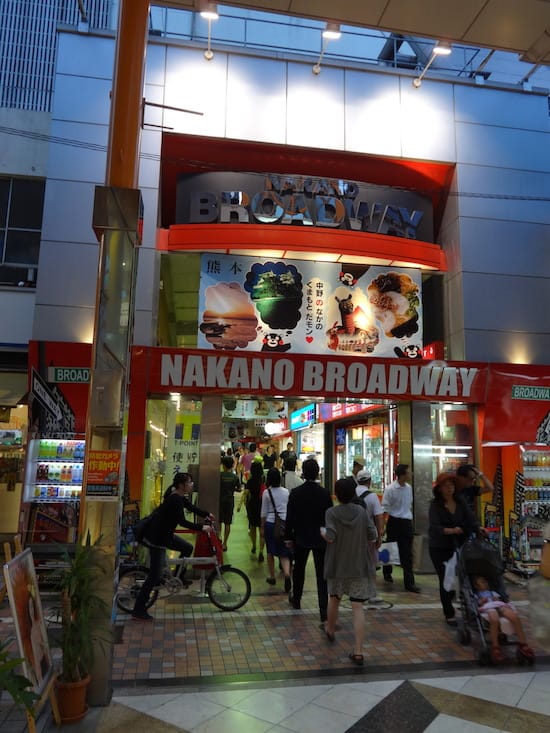
Nakano Broadway entrance
The Broadway itself could easily be described as Mandarake town - because Mandarake dominates the stores within, with at least a dozen locations inside Nakano Broadway. The first one you’ll come across is just inside the entrance (pictured above). You’ll also find kuroneco maid cafés, a few little independents and even a supermarket in the basement.
Shibuya
A popular shopping and entertainment area, mostly concentrated around Shibuya station. Here you will find stores such as Mandarake and Book-off, a cornucopia of department stores, eateries, and even Love Hotels.
Harajuku
The famous fashion district and, more importantly, home of the TOKYO-01 Evangelion Store.
Shinjuku
Home of the world’s busiest (and possibly most maze-like) train station, Shinjuku also hosts a wealth of shopping opportunities and one of my favourite karē restaurants. Though the otaku friendly stores are much more spread out and harder to find than somewhere like Akihabara, there are still plenty of stores to grab your interest - such as Toranoana and Book-off.
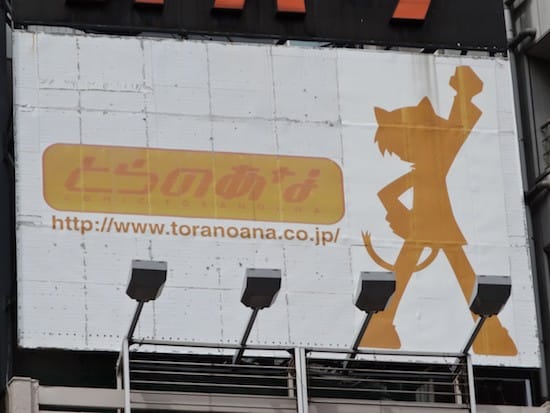
Toranoana billboard in Shinjuku
While you’re in Tokyo why not…
- Take a day out to visit the beach at Kamakura. Just an hour away from Tokyo on the Yokosuka Line. It’s home to the Great Budda, various temples, a quaint little shopping street, several beaches and my favourite karē (curry) restaurant in Japan: Oxymoron.
- Visit some of Tokyo’s beautiful gardens. Such as the Shinjuku Gyoen gardens, home to Motoko Shinkai’s The Garden of Words or Hama Rikyu - Which is easy walking distance from Shimbashi station. The contrast of the gardens against the backdrop of the area’s skyscrapers is simply stunning.
- Eat some sushi. Somewhere like the Genki Sushi chain will suit those looking for an excellent value sushi feast; we went to the branch in Shibuya.
- Take tea at the Gundam Café.
- Head to the Uniqlo flagship store in Ginza, which has a whole floor dedicated to their UT range. Recent years have seen the UT range include products sporting many anime themes from Evangelion and One Piece to Osamu Tezuka.
Osaka
I’ve often heard Osaka compared to Birmingham, due to both city’s post-war redevelopment. In both cases the redevelopment has left a good deal of architecture which, while the height of modernity at the time, is currently regarded much less favourably - but don’t let that put you off. While it may not have the beautiful historic buildings of Kyoto, or live up to the modern metropolis of Toyko, Osaka is Japan’s second city as far as otaku shopping goes. Osaka is also famous for it’s excellent street food - you’ll never go hungry in Osaka, it is undoubtedly a Japanese food fan’s paradise.
Nipponbashi (Den-Den Town)
Den-Den Town is often called the Kansai region’s answer to Akihabara, due to the similar focus of the stores you find there. It is, however, much more compact than Akihabara and arguably easier to find your way around. You will find a good mix of stores in Den-Den Town, from large chains to small independents and rental box stores.
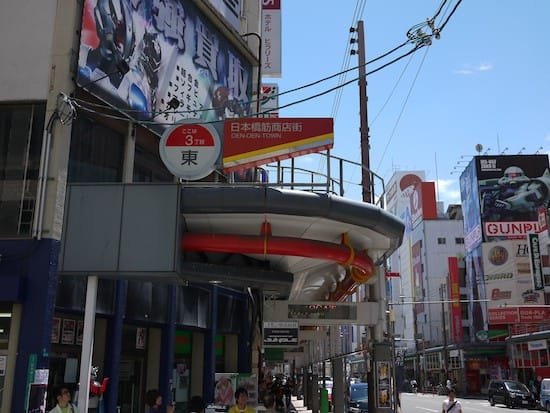
Den-Den Town
Umeda and Amerika-Mura
Outside of Den-Den Town, Osaka also has two Mandarake stores which are worth checking out, one in Umeda and the Mandarake Grandchaos store in Amerika-Mura.
While you’re in Osaka why not…
- Indulge in one of the local specialties, like takoyaki (Octopus balls) or okonomiyaki (thick, filled pancakes, made with yam flour batter and shredded cabbage, often stuffed with things like seafood or pork) - available from one of the many stalls littering the streets of Osaka.
- Visit the world famous aquarium.
- Have a wander around the grounds of Osaka Castle, then take a walk up to the top of the Castle to enjoy the views.
- Play some games at Umeda Joypolis Sega.
Kobe
Unfortunately Kobe is mainly famous in the west for the 1995 earthquake, which destroyed much of the city. Thankfully Kobe is now a fully rebuilt vibrant port city, and while it can be a bit of a maze to navigate Kobe is a very interesting city to visit - Renowned for Kobe Beef, it also houses many interesting sights such as Nunobiki Herb Gardens, a glut of sake breweries and of course some otaku friendly shopping.
Sannomiya
If Den-Den town is the Kansai region’s answer to Akihabara, then Sannomiya is the region’s answer to Nakano Broadway. Specifically, there’s a small grouping of Otaku shops in a shopping centre near Sannomiya station. I found it by heading for Yellow Submarine, just don’t be fooled and end up wandering past it multiple times as I was - it’s on the first floor. As a rule of thumb: Look for the marker on the Google Map above and head north, if you hit the train lines you’ve gone too far.
While you’re in Kobe why not…
- Visit some sake breweries - the Nada district is known as Japan’s top sake producing region. Take at least half a day out to tour the Sake breweries, you won’t regret it - especially after all the free samples.
- Have a wander around the Nunobiki Herb Gardens.
- Take a look at the historical Ijinkan (Western-style houses).
Hakone
Hakone, or TOKYO-03 to any self-respecting anime fan, is home to the Evangelion store. There’s lots of Evangelion themed stuff in Hakone, and lots of pretty scenery. Even the ice creams are Eva themed in Hakone, but if you’re not an Evangelion or scenery fan (although who isn’t?) then there’s little else of interest - well, apart from the “pirate ships”, the shrines, the famous local woodcrafts, the Yunessun Spa Resort (where you can bathe in wine), the cable cars with epic views… you get the idea.
While you’re in Hakone why not…
- Take a ride on a pirate ship (well faux “medieval sailing vessel” [sic]).
- Bathe in wine at the Yunessun Spa Resort.
- Find out if you’re afraid of heights on the Hakone Ropeway.
Kyoto
The former capitol, Kyoto, is a beautiful historic city with many UNESCO World Heritage Sites located in and around the city - but it also has it’s fair share of nerdy shops.
Perhaps unsurprisingly, Tomihiko Morimi (of The Tatami Galaxy fame) features quite heavily in Kyoto. You will find quite a few shops with Morimi related merchandise scattered among the main shopping areas, around Shijo-Dori and Kawaramachi-Dori. There is also a Yellow Submarine, Animate and BOOK-OFF, all around that area to name but a few. Though, do note that the otaku stores in Kyoto are much harder to find than somewhere like Akihabara, as they’re mixed in with other shops and department stores.
While you’re in Kyoto why not…
- Eat at Ichiran Ramen (no Naruto fans, not Ichiraku - Ichiran. Ichiraku’s in Fukuoka), which is well worth a visit. You can customise their ramen to your tastes using a simple tick-box system on a piece of paper provided when ordering - up the spiciness if you dare.
- Head out to Arashiyama, home to Kyoto’s famous bamboo groves. While you’re there you have to visit the gardens of world heritage site Tenryū-ji Zen Buddist temple, quite possibly my favourite place on the planet. Keep an eye out for a small karē restaurant (Arashiyama Curry) on the walk to/from Saga-Arashiyama station, it’s well worth a visit for a curry and a beer after a long day walking around the area.
- Visit the Manga Museum.
Shops to look out for
Obviously there are far too many shops in Japan to cover them all, but we’ll endeavour to cover the main stores you might be interested in as well as a few of our favourite smaller stores, so that you know what to look out for and the type of things you can expect to see in each.
Mandarake

The 800 pound gorilla of Japanese otaku shopping. Mandarake specialise in second-hand goods and cover pretty much everything the discerning otaku needs from manga to DVDs and figures. Mandarake is a great place to find rare and collectible items, but be prepared to spend a long time examining the contents of a sea of shelves and display cabinets.
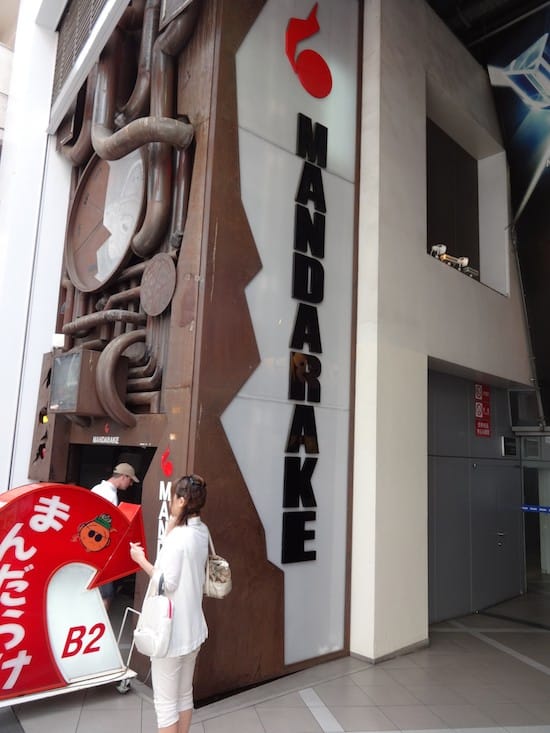
Mandarake Shibuya
Yodobashi Camera
Yodobashi Camera is a chain with stores in many of Japan’s cities, though it’s probably best known for its flagship Akihabara store - one of the first shops many people visit in the area While mainly an electronics store specialising in cameras, Yodobashi Camera also sell mecha kits, figures, games and consoles.
Sofmap

Another big electronics store and subsidiary of Bic Camera. Specialising in computers, Sofmap also offer video games, CDs, DVDs, and figures. Their second-hand figure store in Akihabara is especially worth a visit.
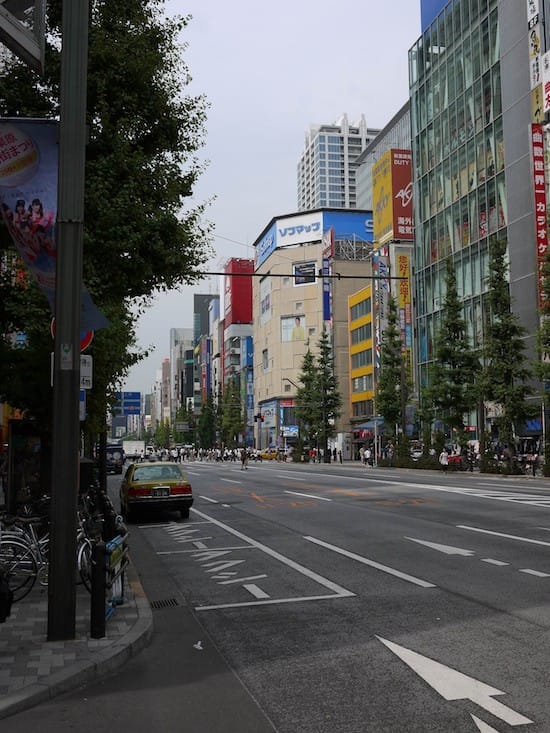
Sofmap Akihabara
BOOK-OFF (and Hobby-OFF)

Specialising in second-hand books, CDs, DVDs, Blu-Rays, games and electronics (and figures in Hobby-OFF and some BOOK-OFF stores), BOOK-OFF stores can be found throughout Japan and could be described as a bit like a Japanese CeX. That comparison shouldn’t be taken too literally though; while CeX is it’s nearest UK equivalent it is a little unfair on BOOK-OFF to compare it with CeX. Comparing the two is perhaps a little like comparing a certain large supermarket chain’s horse burgers to Kobe Beef. BOOK-OFF is my favourite store for picking up CDs - I managed to snag the most of the Kalafina special edition back catalogue there during my last visit to Japan.
Animate

Animate is the largest chain of its type in Japan and their stores can be found all over Japan - Animate specialise in anime, manga and games. Any Lucky Star fans should be able to recognise their mascot; do you know Legendary Girl A?
Hobby Base Yellow Submarine

Cards, games, figures, models - basically anything that falls under the Japanese definition of “hobby”. It’s hard to miss Yellow Submarine stores, with their distinctive yellow colour schemes.
Kotobukiya
Kotobukiya are actually a figure and collectibles manufacturer, but they also have their own stores. The Kotobukiya Akihabara flagship store is famous for its showcase floor on which they show off all their latest lines, it’s well worth a visit but be warned they have some very nice figures - your wallet will not thank me.
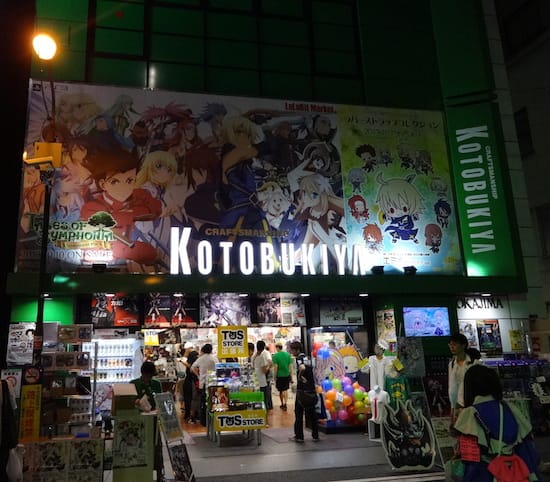
Kotobukiya, Akihabara
K-Books
K-Books are a book store specialising in used doujin books and related materials. K-Books is also our catgirl correspondent’s favourite chain for hunting down adult material - you have been warned.
Melon Books

Another doujin book shop with shops all over Japan, Melon Books stocks all sorts of doujinshi, illustration books and merchandise. Melon Books also have an adult section in many stores.
Toranoana
Another doujin store specialising in books, manga, games and collectables. As with most doujin stores expect some adult content.
Lashinbang
Lashinbang is known for it’s hard-to-find anime collectibles, doujinshi and second-hand goods. Expect to see adult sections in many of their stores.
Gamers

Despite its name, this store’s focus is anime and manga. Gamers sells a wide range of anime and manga related goods including movies, video games, CDs, stationary, software, trading cards and character goods (such as calenders, phone straps, keychains and so on).
Treasure Hunter
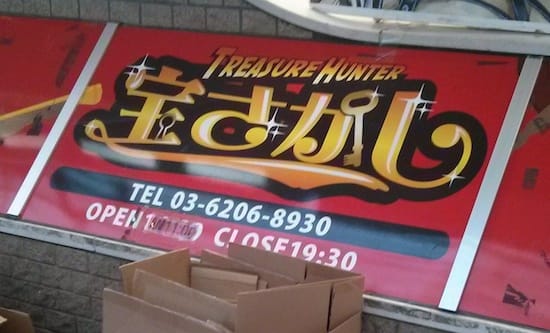
A little shop which can be found in an Akihabara basement near Kotobukiya. Treasure Hunter specialises in figures - lots of figures, stacked to the rafters.
Mulan
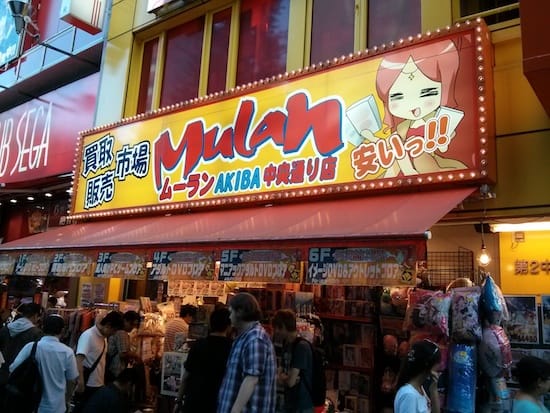
Another Akihabara shop, specialising in DVDs, Blu-Rays, games, and manga.
Super Potato
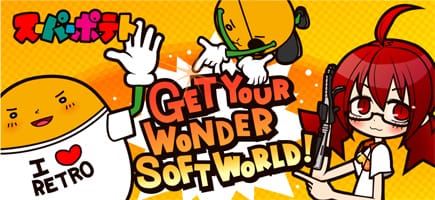
Super Potato isn’t really a shop, it’s more like a video game museum where you can buy the exhibits, and a very famous store in Akihabara - as such it’s well worth a visit for any gamer.
Rental Box Stores
This is a type of store rather than a specific shop or chain and they’re quite common in Japan, though I’ve never seen one over here. Rental box stores rent space (usually box shaped, hence the name), to people who can then sell their items in said “box”. They’re usually, though not necessarily, filled with second-hand goods and can be a great place to pick up a bargain or rare item.
Final Thoughts
Unfortunately it isn’t possible to cover everything there is to know about shopping in Japan, but after reading our guide you should have a good idea of what to expect. We hope you find it useful, and good luck with your shopping! Just don’t blame us when you buy far too much and have to ship it all back to blighty.
